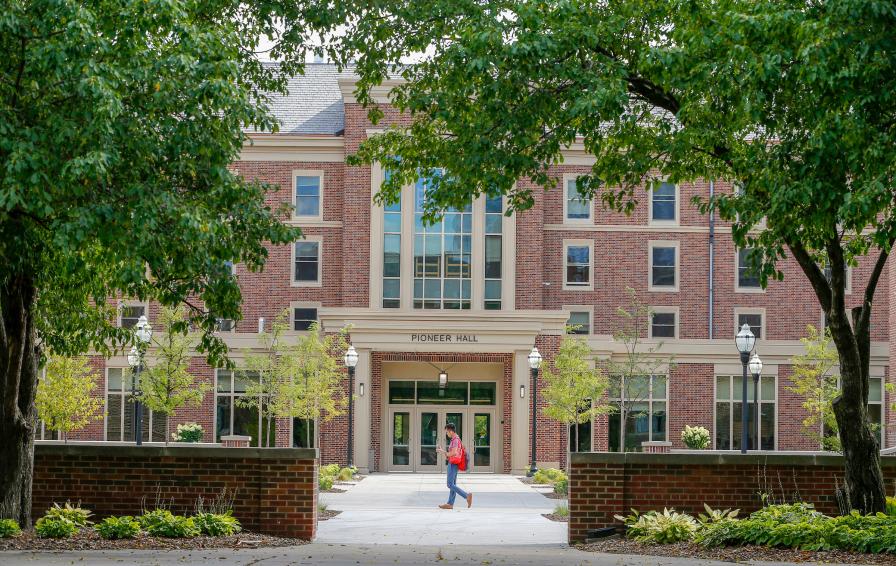
Sustainability
It all adds up.
We join the rest of campus in a firm commitment to doing what we can to conserve water and resources, as well as promoting recycling and green living in our residential communities. The University is working toward net-zero carbon emissions by 2050. In 2019, 41% of our electricity came from renewable sources, and our emissions have been reduced 37% since 2011, but there's still work to be done.
Turn off the lights, use recycling and compost bins in your building or dining hall, and keep your reusable water bottle and food containers on hand. Our collective decisions to change the little things, get us one step closer to conserving our natural resources and ensuring a healthier, more equal, and sustainable life for all.
In on-campus housing, we have taken many steps in the right direction including recycling programs, low-flow toilets and showers, water and energy-saving laundry facilities, and recycled material in hall offices. Read more in the accordion below.
- 100% recycled office paper
- Energy-saving lamps (e.g., CFLs)
- Energy Star washers/dryers in all laundry rooms
- Environmentally friendly cleaning chemicals (whenever possible)
- Furniture made with recycled or sustainable materials (e.g., Pioneer Hall’s dining room tables and sofas/chairs upholstered with recycled or sustainable fabric)
- LED exit signs in all residence halls/apartment complexes
- Low or no VOC carpet installations
- On-demand water heaters in residence halls/apartment complexes
- Reduced water usage showerheads in all showers
- Re-manufactured ink cartridges for printers
- Toilet paper made from 100% recycled paper
- Water saver flush valves for toilets and urinals
- Certified carbon-neutral carpet (Bailey Hall’s resident rooms; Centennial Hall’s Residential Restaurant, corridors and lounges; Comstock Hall’s corridors and resident rooms; Middlebrook Hall’s corridors and lounges; Territorial Hall’s lounge and new addition corridors; and Frontier Hall’s new addition corridors)
Get Involved
Sustainability Advocates
UMN Sustainability
On-campus and in our community, there are many ways to make active decisions about the choices you make in your daily life and to raise awareness for sustainability with friends and family!

Did you know?
Another way campus aims to decrease carbon emissions is by building and renovating better facilities—saving on energy consumption and increasing indoor air quality.
The recent renovation of Pioneer Hall included occupancy sensors in common areas, programmable thermostats in rooms, LED lighting, specialized windows, Energy Star-rated appliances, and a heat recovery system. There's even a 5-million-gallon rainwater capture system (shared with the health sciences building) that cleanses runoff water before returning it to the Mississippi River.